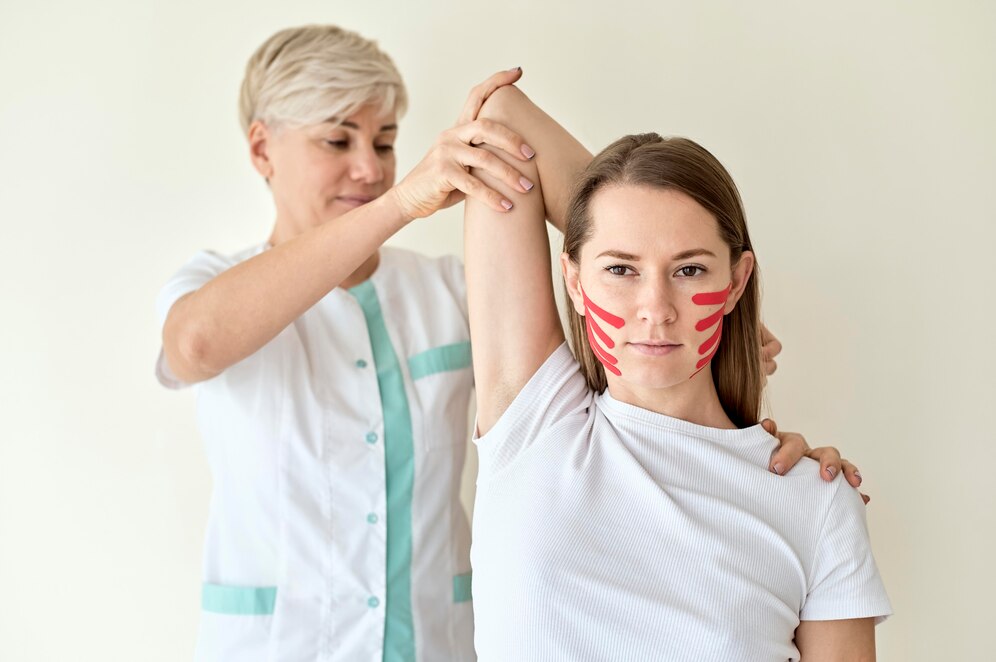When you’re dealing with an injury, disability or chronic condition, the right therapy can make all the difference. Both physiotherapy and occupational therapy offer vital support, but each focuses on different aspects of recovery. Understanding their unique approaches can help you choose the therapy that best suits your needs and goals. So, what are the differences between physiotherapy vs occupational therapy?
Physiotherapy focuses on improving movement and physical function, while occupational therapy helps people perform daily tasks by adapting their environment or teaching new techniques. Understanding these differences can guide you in choosing the right therapy for your needs.
Let’s take a closer look at what makes physiotherapy and occupational therapy distinct and how they can support your health journey.
Physiotherapy vs Occupational Therapy: A Quick Overview
Both physiotherapy and occupational therapy aim to improve a patient’s quality of life but differ in their methods and areas of focus.
- Physiotherapy: Focuses on enhancing movement, reducing pain and restoring physical function after injury or illness through exercises, manual therapy and rehabilitation programs.
- Occupational Therapy: Takes a broader approach by considering the client’s environment. It involves assessing, adapting or modifying their surroundings and providing aids to help them navigate daily life, enabling a higher quality of living.
Experience Personalised Therapy at Mind Heart Body Centre in Artarmon
Looking for expert physiotherapy or occupational therapy services near Artarmon and North Sydney? At Mind Heart Body Centre, we tailor each therapy session to your unique needs, ensuring you get the best care possible. Whether you need rehabilitation for a physical injury or support for daily activities, our experienced therapists are here to guide you.
Ready to improve your well-being? Call us on 8068 4696 or Book Now to start your journey to a healthier, more independent life.
What is Physiotherapy?
Physiotherapy is a healthcare discipline that focuses on improving physical function, reducing pain and preventing future injuries. It is often used for rehabilitation after surgeries or injuries and for managing chronic conditions.
Techniques Used in Physiotherapy
Physiotherapists use a range of techniques to support recovery and enhance mobility, including:
- Exercise Therapy: Tailored exercises to strengthen muscles, improve flexibility and restore joint function.
- Manual Therapy: Hands-on techniques, such as massage and joint mobilisations, to reduce pain and improve movement.
- Electrotherapy: Modalities, such as ultrasound and electrical stimulation, to aid tissue healing and pain relief.
Conditions Treated by Physiotherapy
Physiotherapy can help with a variety of conditions, including:
- Sports injuries, such as sprains, strains and fractures.
- Post-surgical rehabilitation, including joint replacements and ligament repairs.
- Chronic conditions like arthritis and lower back pain.
- Neurological conditions such as stroke or multiple sclerosis.
What is Occupational Therapy?
Occupational therapy focuses on enabling individuals to participate in meaningful activities and everyday tasks, despite physical, mental or emotional challenges. Occupational therapists (OTs) often work with patients to develop strategies and modify environments to improve independence.
Techniques Used in Occupational Therapy
OTs employ a range of techniques to assist individuals in their daily lives, such as:
- Task Adaptation: Modifying activities or tools to suit the patient’s capabilities.
- Environmental Adjustments: Adapting home or work environments to improve accessibility and functionality.
- Skills Training: Teaching new techniques to perform everyday tasks effectively.
Areas Where Occupational Therapy is Effective
Occupational therapy is ideal for:
- Individuals recovering from surgery, strokes or brain injuries.
- Children with developmental delays or disabilities.
- Adults with mental health challenges affecting daily activities.
- People managing injuries, aging or chronic conditions like Parkinson’s disease.
Key Differences Between Physiotherapy and Occupational Therapy
While both therapies aim to enhance well-being, they take different approaches:
Focus of Treatment
- Physiotherapy: Targets physical recovery and rehabilitation by addressing the root cause of physical impairments.
- Occupational Therapy: Emphasises improving the ability to perform daily tasks by adapting the environment or teaching compensatory techniques.
Techniques and Tools
- Physiotherapy: Utilises manual therapy, exercise and equipment like resistance bands and weights.
- Occupational Therapy: Focuses on adaptive tools, home modifications and skill-building exercises.
Patient Goals
- Physiotherapy: Aims to restore mobility and reduce pain.
- Occupational Therapy: Helps individuals achieve independence in daily activities.
Factors to Consider When Choosing Between Physiotherapy and Occupational Therapy
Deciding between physiotherapy and occupational therapy depends on your specific needs and goals. Here are some factors to consider:
Nature of Your Condition
If your primary concern is physical pain, reduced mobility or recovery from an injury, physiotherapy may be the better choice. However, if you’re struggling with daily tasks due to a disability or mental health issue, occupational therapy might be more suitable.
Goals of Therapy
- Choose physiotherapy for targeted recovery and rehabilitation.
- Opt for occupational therapy if your goal is to regain independence in daily life.
Accessibility and Duration
Both therapies may require multiple sessions over weeks or months. Consider the availability of qualified therapists and your time commitment when making a decision.
Benefits of Combining Physiotherapy and Occupational Therapy
In some cases, a combination of physiotherapy and occupational therapy can provide comprehensive care. For example:
- Post-Stroke Rehabilitation: Physiotherapy helps improve mobility, while occupational therapy focuses on regaining the ability to perform daily tasks.
- Chronic Pain Management: Physiotherapy reduces pain and improves strength, while occupational therapy teaches techniques to manage daily activities without discomfort.
Working together, these therapies address both the physical and functional aspects of recovery.
Final Thoughts
Whether you choose physiotherapy or occupational therapy depends on your individual needs and health goals. Physiotherapy is ideal for addressing physical impairments and pain, while occupational therapy focuses on improving independence in daily life. Both therapies offer unique benefits and, when combined, can provide a holistic approach to care.
By understanding the differences and benefits of each therapy, you can make an informed decision that supports your health journey.
Looking for expert physiotherapy or occupational therapy services near Artarmon? Contact Mind Heart Body Centre today at 8068 4696 or Book Now for personalised, high-quality care tailored to your needs.


